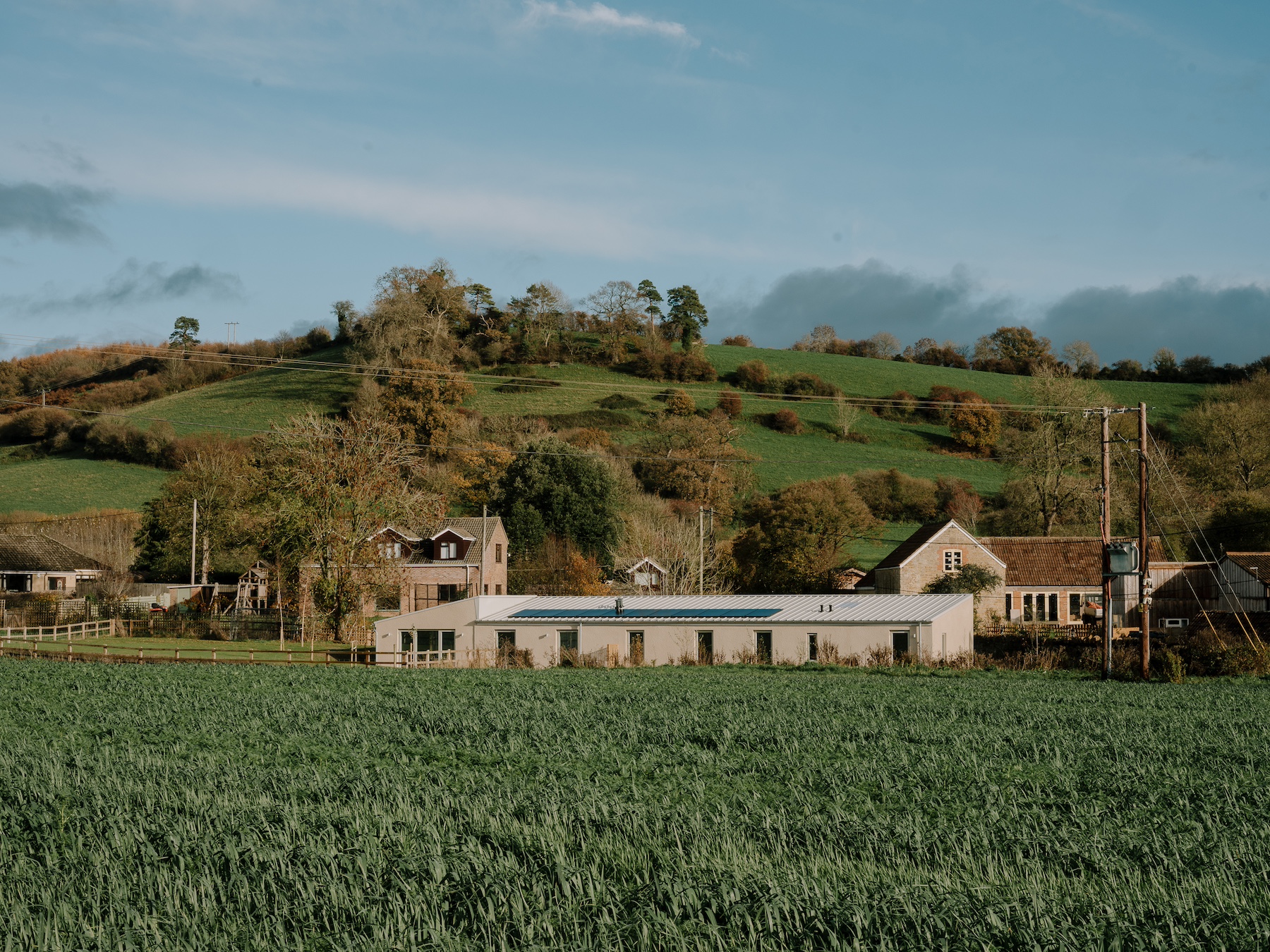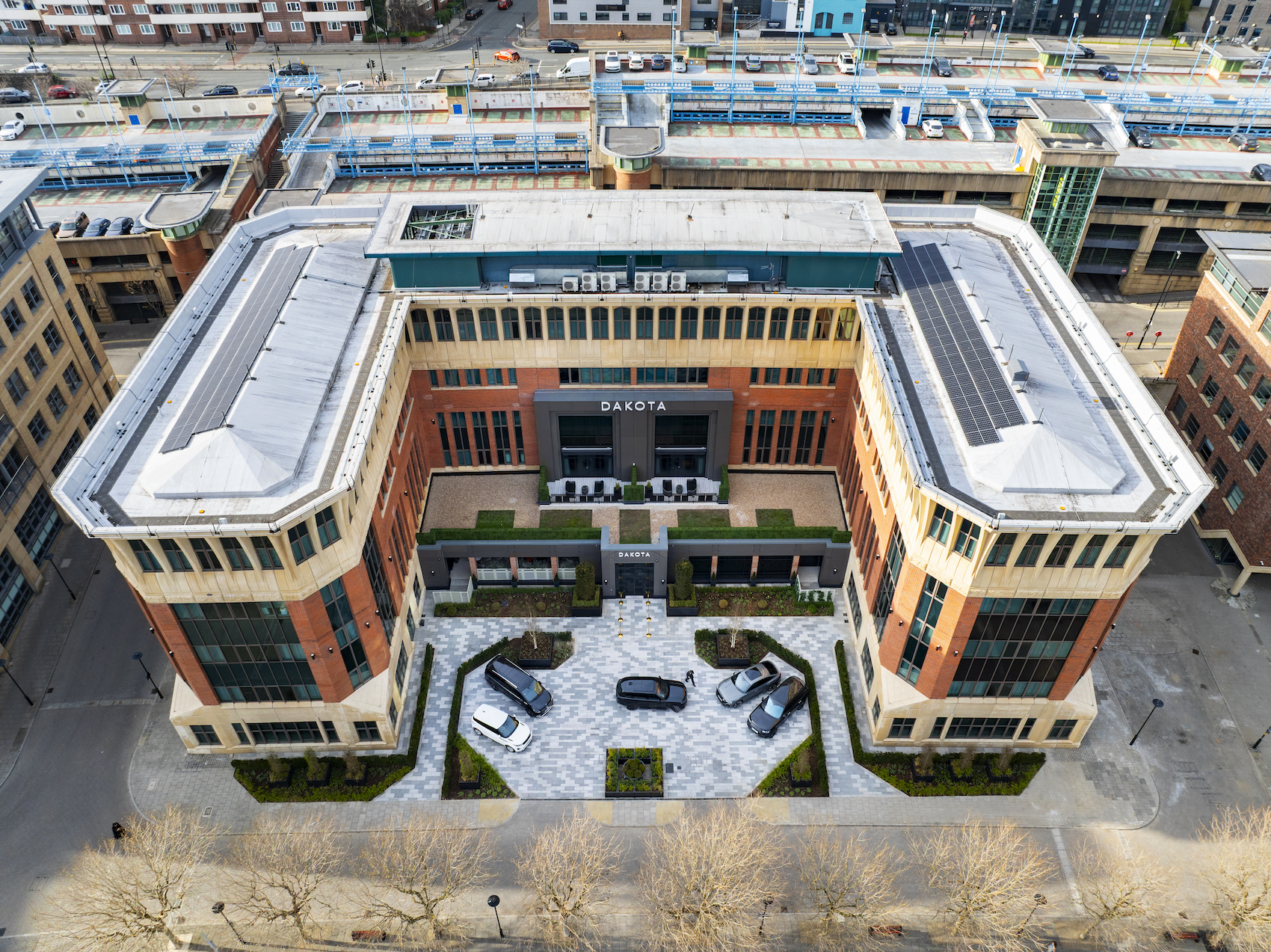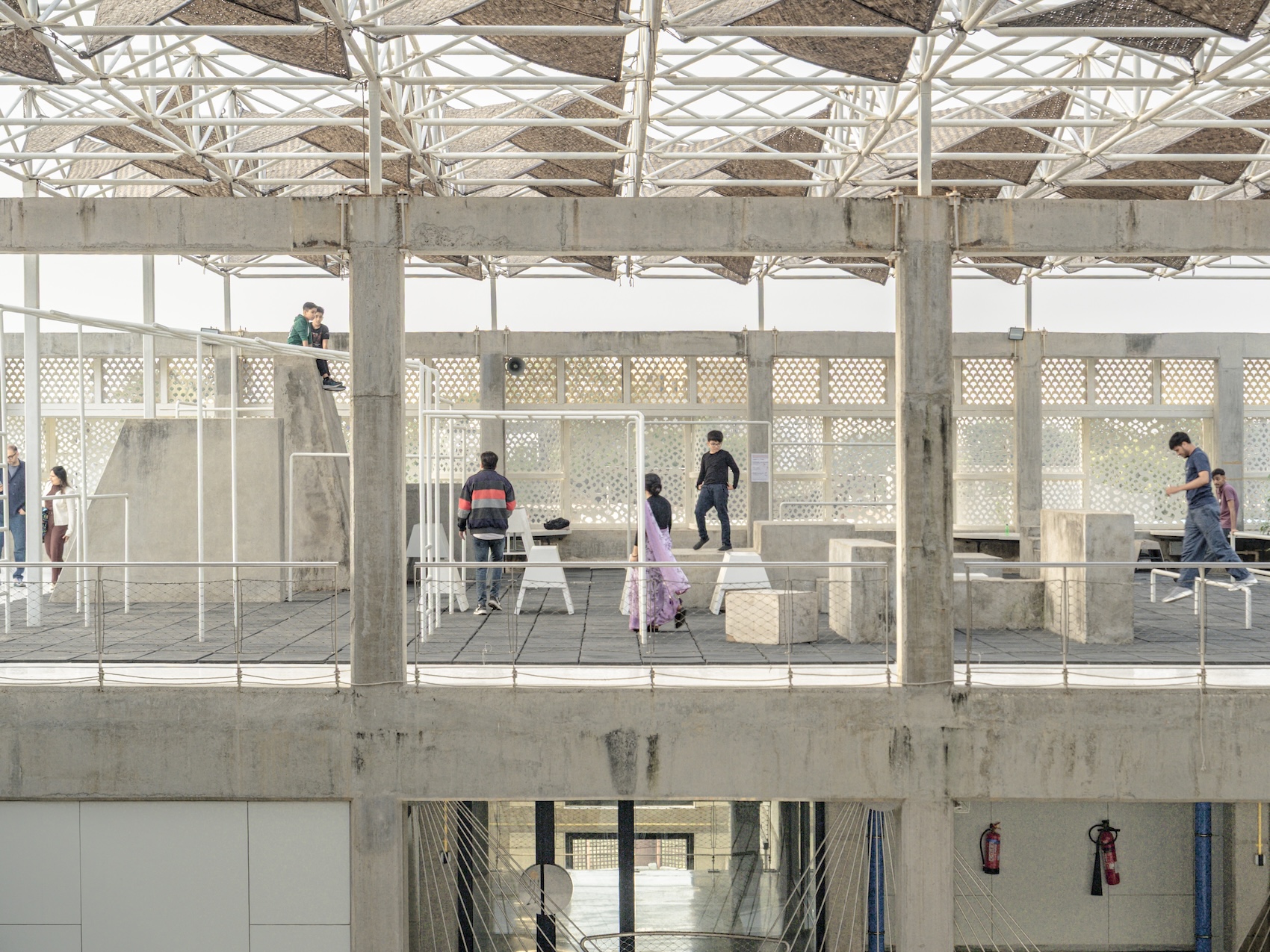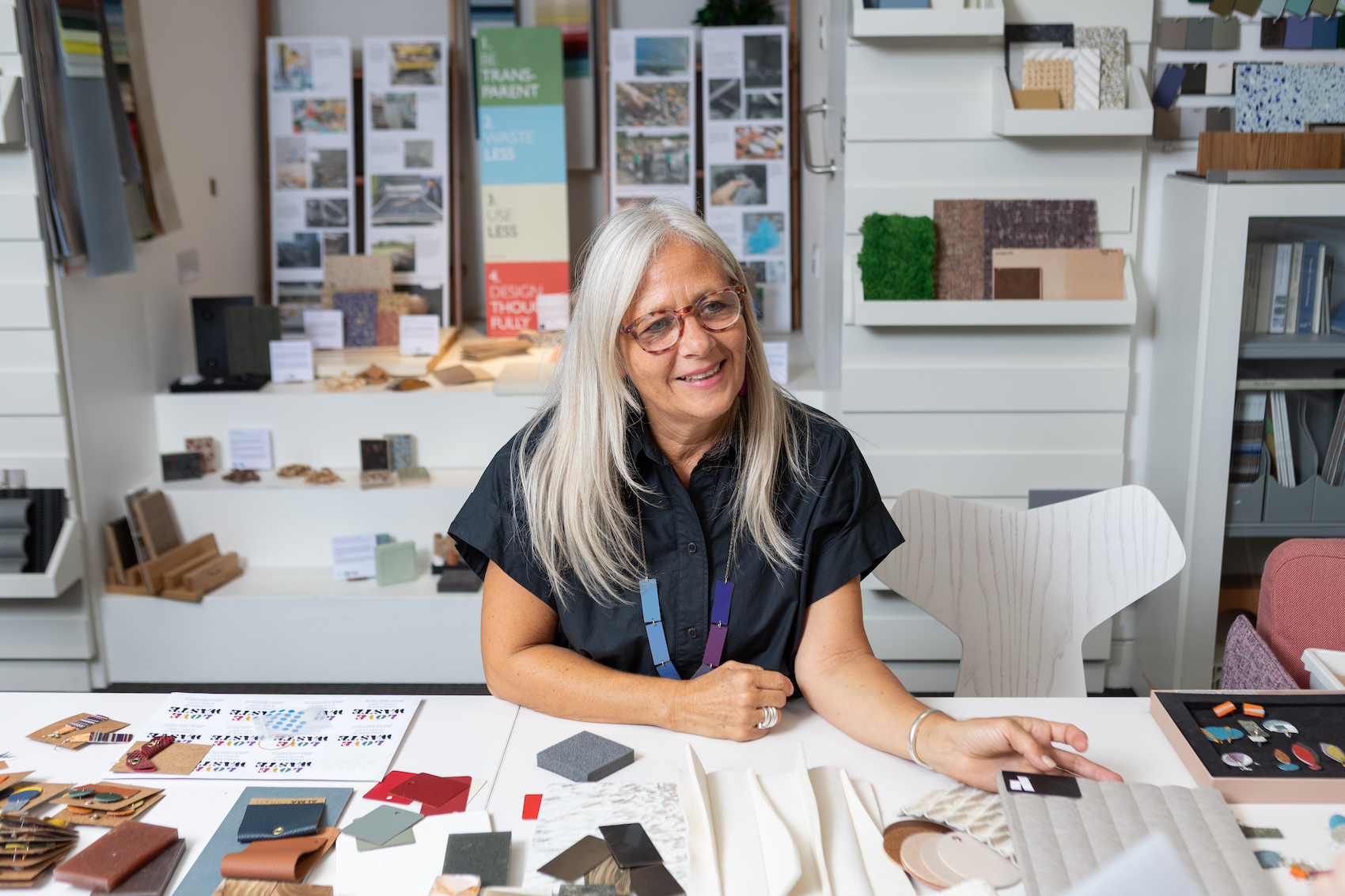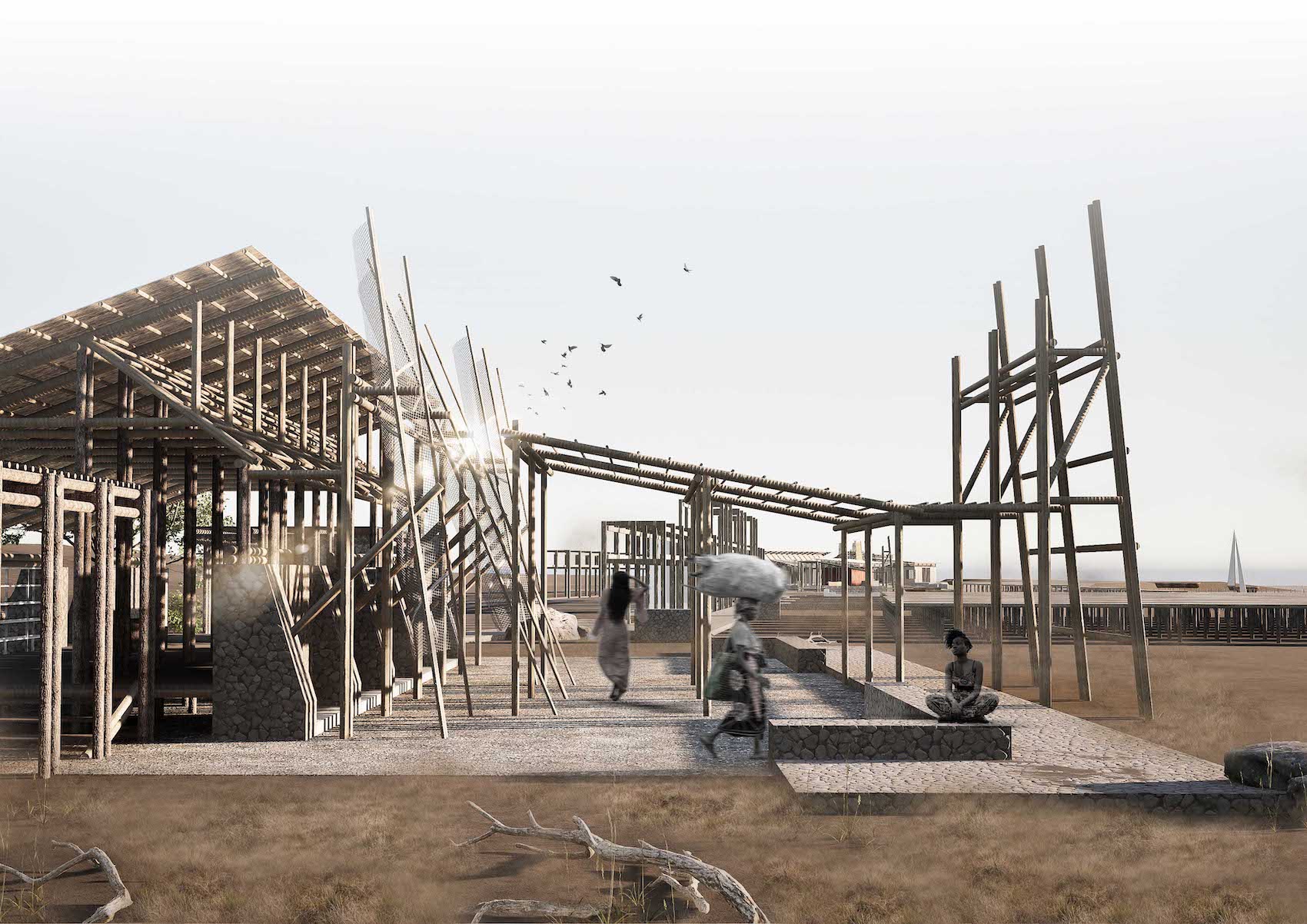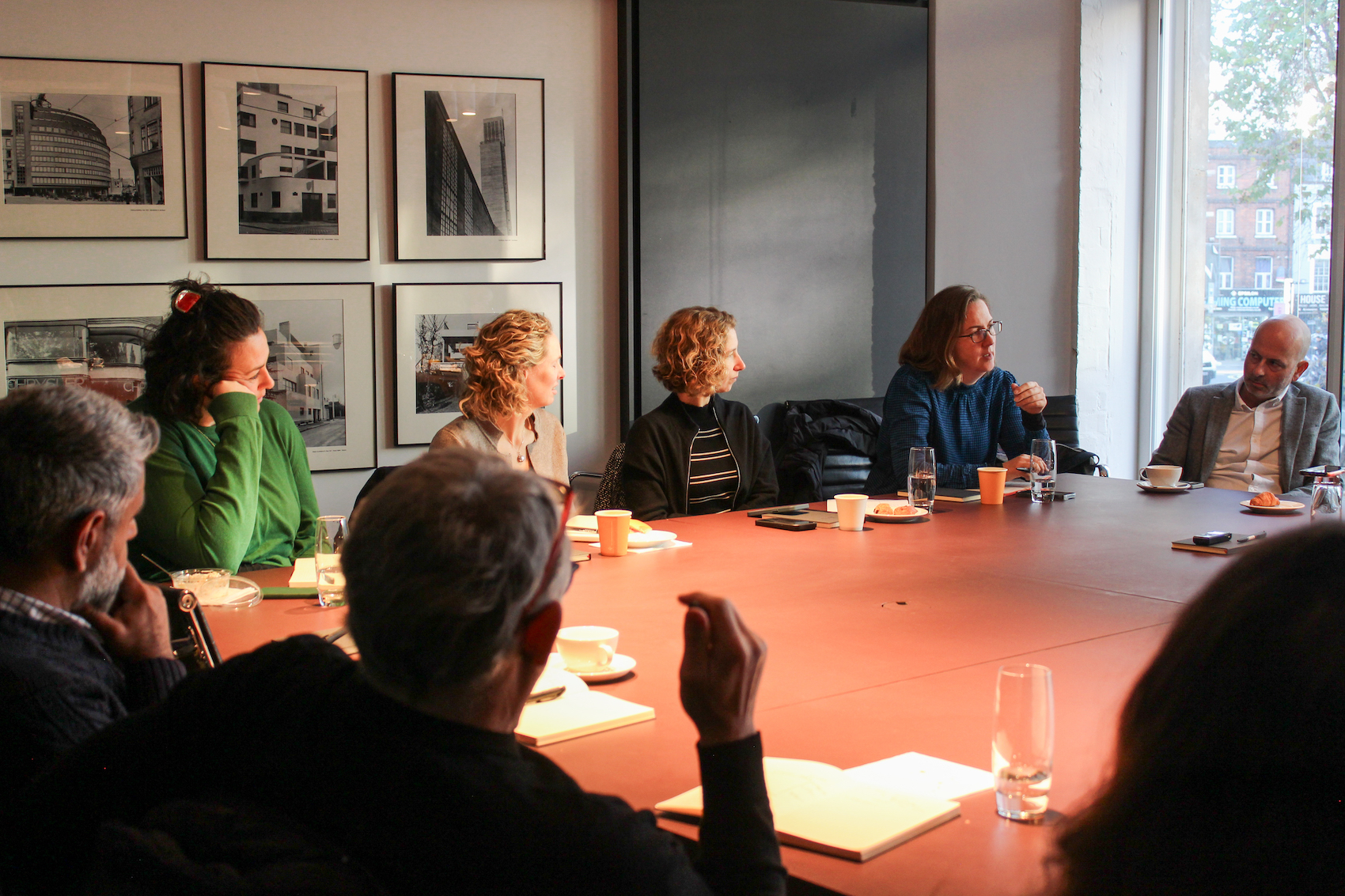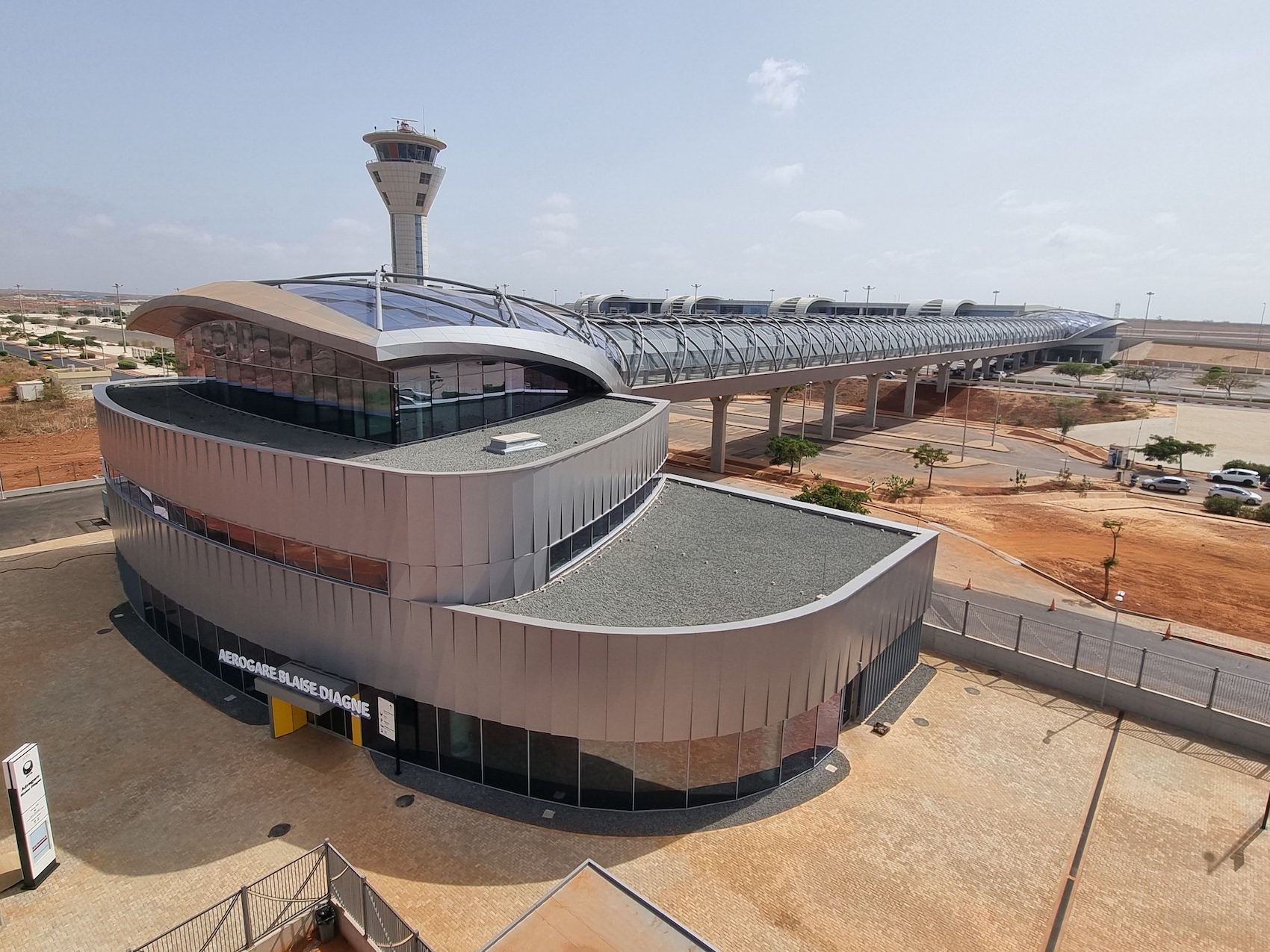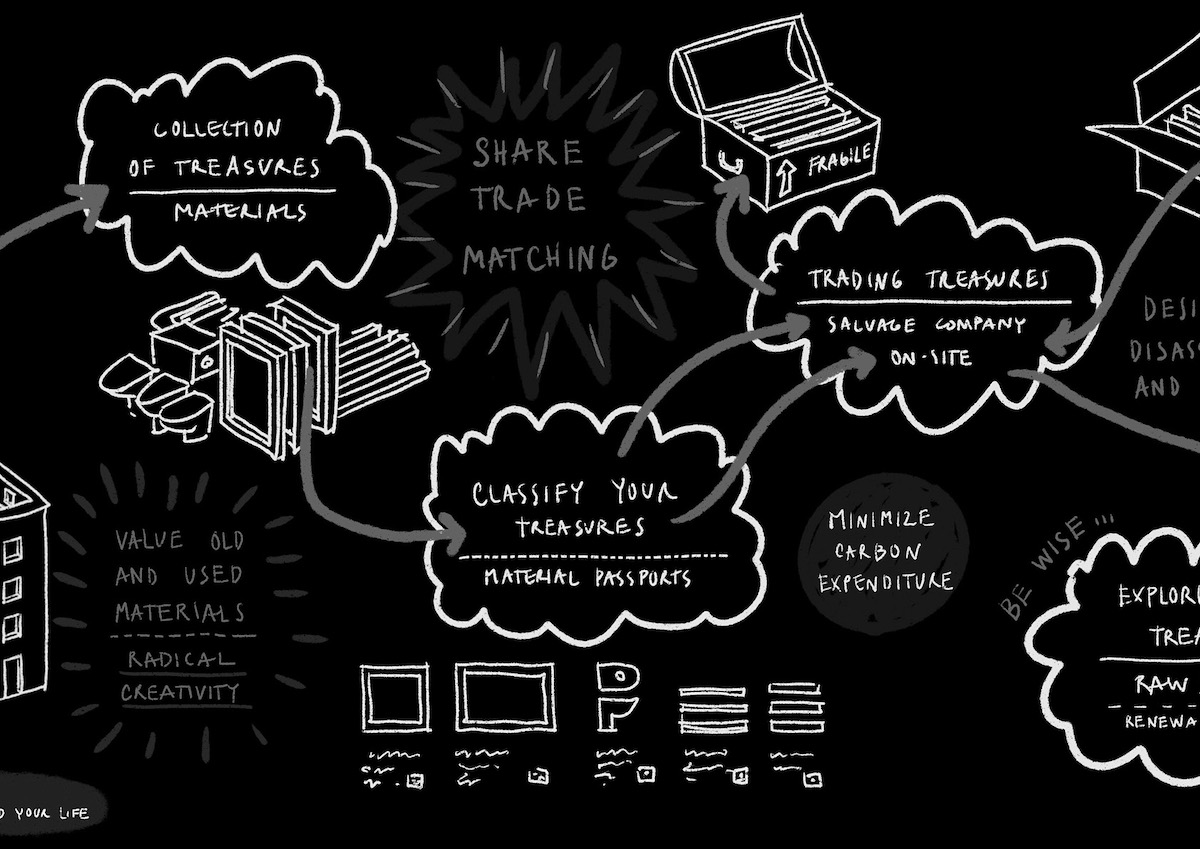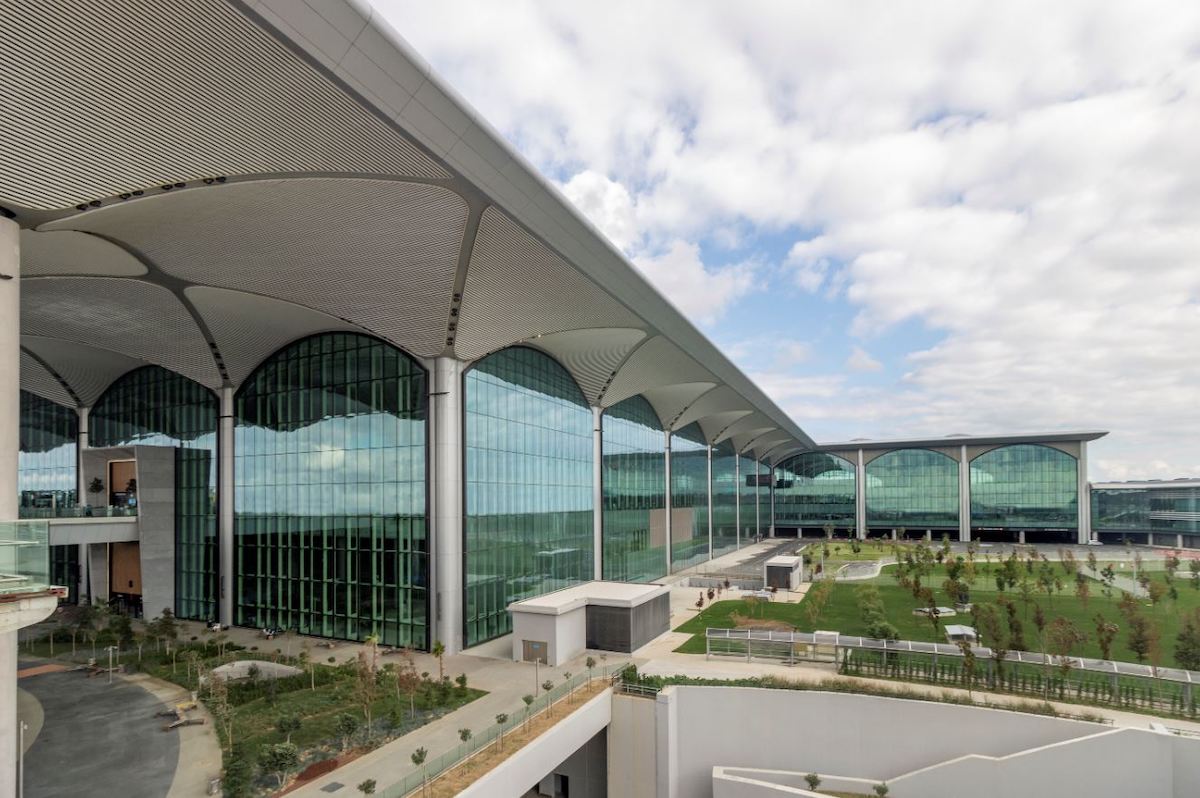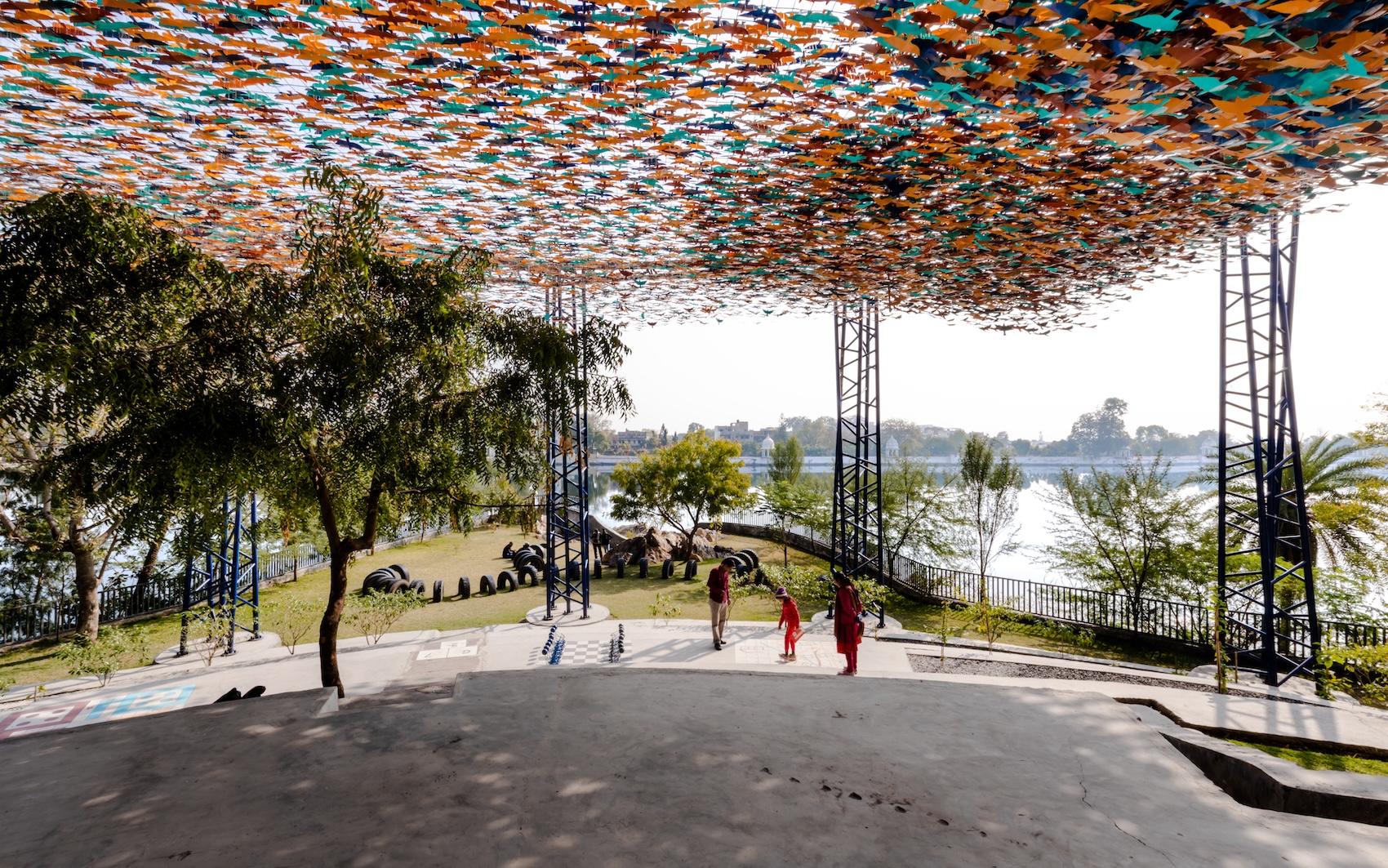Selldorf Architects’ controversial reworking of the National Gallery’s Grade I-listed Sainsbury Wing by Venturi Scott-Brown was always going to be controversial. But did it have to be so polite?
It was never going to be straightforward. The extension to London’s National Gallery has been a divisive subject in the architectural world for decades. Since 1981, to be precise, when the Secretary of State, Michael Heseltine, launched a competition to give the Gallery a new wing at the north west corner of Trafalgar Square. The site’s former occupant, Hampton’s Furniture Store, had been bombed during the Blitz, and the site had never quite regained its sense of purpose. Its re-emergence as a new extension felt like the ultimate renaissance; an opportunity for a new generation to make their mark on one of the country’s most venerable cultural institutions, and arguably its best-known city square.
The shortlist of preferred architects majored on practices that could loosely be termed ‘progressive’: Ahrends, Burton and Koralek (ABK); Arup Associates; Covell Matthews Wheatley; Raymond Spratley Partnership; Richard Rogers; Richard Sheppard, Robson and Partners and Skidmore, Owings and Merrill. The final decision was put to a public vote, with ABK emerging as the winner. A modern building for modern times. Or, as Prince Charles famously proclaimed, “monstrous carbuncle on the face of a much-loved and elegant friend.”
This difference of opinion sparked an acrimonious war of words, played out across the press. Prince Charles found his voice as the self-appointed protector of traditional and vernacular buildings, or, at a push, an easy-on-the-eye form of ‘comfort architecture’. ABK found themselves the unwilling poster-boys for the forces of Modernism, accused of peddling an esoteric puritanism that was incomprehensible, and even offensive, to all but the architectural elite. The ‘style wars’ became front page news. It seemed that every tabloid journalist was an armchair architecture critic. The fallout was profound. ABK was left reeling from a PR tsunami that nobody saw coming. British Modernism lost its footing. The general view that the architects were out of touch with popular opinion precipitated an image problem from which the profession has never quite recovered. More immediately, nobody was surprised when planning permission was refused for ABK’s design.
The remodelled foyer, looking back towards the entrance from Trafalgar Square. Cutaway ‘scoops’ in the mezzanine compromise Venturi Scott Brown’s notion of compression, opening up sightlines between floors and flooding the previously dark undercroft with natural light.
A new shortlist, announced in 1985, signalled a distinct shift in sensibility. The six favoured practices – IM Pei Partnership; Colquhoun and Miller; Jeremy Dixon/BDP; CZWG; Stirling, Wilford and Associates and Venturi Scott Brown – offered a user-friendly take on Modernism, tempered by contextualism, narrative and ornament. There was a certain inevitability about the decision to award the commission to post-modernism’s power couple Robert Venturi and Denise Scott Brown.
Venturi was over the moon, declaring “You are looking at the happiest architect in the world … and the most privileged. I [will] be involved with two of my great loves – Italian painting and English architecture.’” He and Scott Brown delivered what remains Britain’s most high-profile essay in Post-modernism. Self-consciously contextual, its ‘echo façade’ was expressed as a riff on the architectural language of the neighbouring main gallery designed by William Wilkins in 1838, that ‘faded’ out as the building turned the corner. Entry was by means of a small entrance leading to a deliberately compressed low-ceilinged foyer, giving way to a grand side-lit staircase with all the grandeur of an Italian palazzo. The first floor galleries were designed as an enfilade of arched galleries reminiscent of the Florentine churches were many of the artworks would originally have been displayed.
If the original response to the project was somewhat muted, it proved to be an acquired taste, acquiring a solid following and, in 2018, a Grade I listed status. By 2021, when the National Gallery director Sir Gabriele Finaldi announced his plan to remodel the building as part of its bicentenary celebrations, the project had acquired the status of a national treasure. The National Gallery made a game attempt to frame the revamp as nothing to get too het up about; a pragmatic response to changing operational requirements. Visitor numbers had doubled in the 30 years since the building was completed. Changing expectations around accessibility, security, wayfinding and retail had to be addressed. While the upper floor galleries were “practically perfect”, the ground floor was struggling in its role as grand entrance, welcome space, and introduction to the gallery complex as a whole.
Clear glazing illuminates the side-lit grand staircases and unveils glimpses of the original National Gallery building, designed by William Wilkins in 1838.
But it was never going to wash. Such a contested project. Such a high-profile site. And such a vociferous and passionate architect. The announcement sparked a flurry of speculation about the likely choice of designer. The shortlist – Asif Khan; Caruso St John; David Chipperfield; David Kohn; Selldorf Architects and Witherford Watson Mann – was analysed at length. The appointment of Selldorf, working in close collaboration with Purcell, bringing their heritage expertise, and VOGT landscape architecture, was widely seen to be a sensible choice. The practice has delivered projects for an impressive roster of cultural institutions including: The Frick Collection; Hauser & Wirth; the Museum of Contemporary Art San Diego, the Art Gallery of Ontario, the Smithsonian American Art Museum and Neue Galerie New York.And the decision to appoint a New York-based practice signalled the National Gallery’s status and ambition on the international stage. While quick to conceded that “postmodernist architecture is not my territory” Annabelle Selldorf took pains to understand the original design, visiting Denise Scott Brown, and announcing at the National Gallery’s 2023 Linbury Lecture that the remodelled building would “look and feel like the Venturi building that it always was” and “be the building it always wanted to be”.
The Venturi Scott Brown camp wasn’t convinced. Scott Brown whipped up opposition to the proposals, canvassing contacts and alerting The Guardian to the fact that Annabelle Selldorf was “making our building look like a circus clown.” More specifically, much of the criticism focussed on plans to ‘declutter’ the entrance hall by removing two non-load-bearing columns and cut away a portion of the foyer ceiling, opening up views to the stairs and lift. Or, to put it another way, to undermine Venturi Scott Brown’s carefully crafted journey from dark, low-ceilinged entrance crypt to generous light-filled staircase; a play on compression and release and an overt homage Edwin Lutyens and John Soane.
”Mud Sun’, a monumental site-specific work by Richard Long, is located at the top of the grand stair and is the first artwork to greet visitors to the Gallery. The intricate patterns of swipes and swirls were created using tidal mud from the River Avon close to Bristol, Long’s home town.
Architect and Venturi Scott Brown loyalist, Richard Pain, wrote an article for Architecture Today, arguing that “The proposed Selldorf Architects alterations, glimpsed through a slow drip feed of glossy perspectives, show little understanding of, and certainly no love for, this building” and that “the proposed double-height entrance void, created by cutting the mezzanine away in a sinuous curve, removes the sense of compression and anticipation before the exhilarating release of the grand staircase and takes away one of the best locations to view London through this stratified facade. Cutting away portions of the fine stonework façade to the main stair and creating a bright and airy entrance hall is deeply regrettable. Like a child that can’t wait for pudding, the visitor is deprived of any sense of anticipation and left feeling bilious.”
He had a point. But Selldorf makes the counter argument that it’s hard to recover from first impressions, and that for the main part, visitors didn’t so much ‘enjoy the sense of compression’ as wonder if they’d come to the right place. The double whammy of revolving entrance doors and tinted glazing made the building unwelcoming, even a little ominous, and difficult to read. In its new incarnation, a new public square offers step-less street level entrance. Clear glazing floods the foyer and the side-lit grand staircase with daylight and gives the street glimpses of movement inside.
Selldorf’s two most controversial moves – cutting away the mezzanine and removing two non-loadbearing columns, installed by Venturi Scott Brown for dramatic effect – were a response to the fact that the low-ceilinged lobby felt uncomfortably cluttered and cramped. Selldorf admits she allowed herself a moment of satisfaction when demolition workers uncovered a note, written by John Sainsbury and dated 26 July 1990 and hidden inside one of the offending columns, offering reassurance that “one of the donors of this building is absolutely delighted that your generation has decided to dispense with the unnecessary columns.” Whatever the architectural rights and wrongs, the combination of clear glazing, double-height volume and column-free space has opened up a series of internal and external views; across to the main stair, upwards to the gallery, outside to William Wilkins’ 1830s National Gallery building next door, and to the city beyond. It’s hard to imagine a better place to while away a couple of hours than the mezzanine bar, now blessed with a birds-eye view across Trafalgar Square.
The mezzanine enjoys sweeping views of the grand staircase and overlooks the foyer below.
There are some duff notes. The lower-ground floor events space is disappointing. In the absence of windows, its main focus is a long blank wall lined by a series of identical curved benches; Selldorf’s riff on an existing semi-circular ‘love seat’ designed by Venturi Scott Brown. A nice idea, but one that probably should have been parked. A singular love-seat nestled in an outsize cultural institution is charming; an invitation to inhabit the building in a very private way. A long line of repeated curved seating units – each with a double plug socket featured prominently in the centre of its base – has all the charm of an airport lounge.
But even the most diehard Venturi Scott Brown aficionado would have to concede that the building feels more welcoming in its present incarnation. The trade-off is pretty straightforward. Yes, the building feels less subtle, less challenging, perhaps a little less sophisticated than it once did. But it is also lighter, brighter, more legible – and better able to breathe. Less a built manifesto and a serious bit of architecture; more an enjoyable place to visit and enjoy. No, the two conditions shouldn’t be mutually exclusive. Perhaps there was another solution. A bolder, more surprising intervention that could have solved the operational challenges while making an architectural statement on a parr with Venturi Scott Brown’s original vision. But the multiple constraints of working with a Grade I listed building, with all that history, all that baggage, under the watchful eye of the architectural glitterati, has imposed a logic of its own. A requirement for caution and consensus that is the privilege and the curse of the buildings we value most.
Visible from the top of the main staircase, the new Locatelli restaurant on the mezzanine enjoys views across Trafalgar Square.
Credits
Architect
Selldorf Architects
Heritage architect
Purcell
Landscape
VOGT
Project manager
The NG200 Project
Construction manager
Gardiner & Theobald
Structural engineer
Arup
Services engineer
Arup
Sustainability engineer
Arup
Pedestrian flow
Arup
Acoustic engineer
Arup
Lighting consultant
L’Observatoire International
Planning consultant
The Planning Lab
Access consultant
David Bonnett Associates
Wayfinding
Pentagram
Wayfinding & graphics
Thomas Matthews
Community engagement
Kaizen
Access consultant
Jane Simpson Access
Approved inspectors
AIS Chartered Surveyors
Fire engineer
OFR Consultants
Vibration consultant
Bickerdike Allen
Cafe/espresso bar furniture design
Studio Linse
Locatelli restaurant interior
LXA
Espresso bar and Locatelli cocktail bar
Selldorf
Bookshop and gallery shop
RFK/Ryder
















